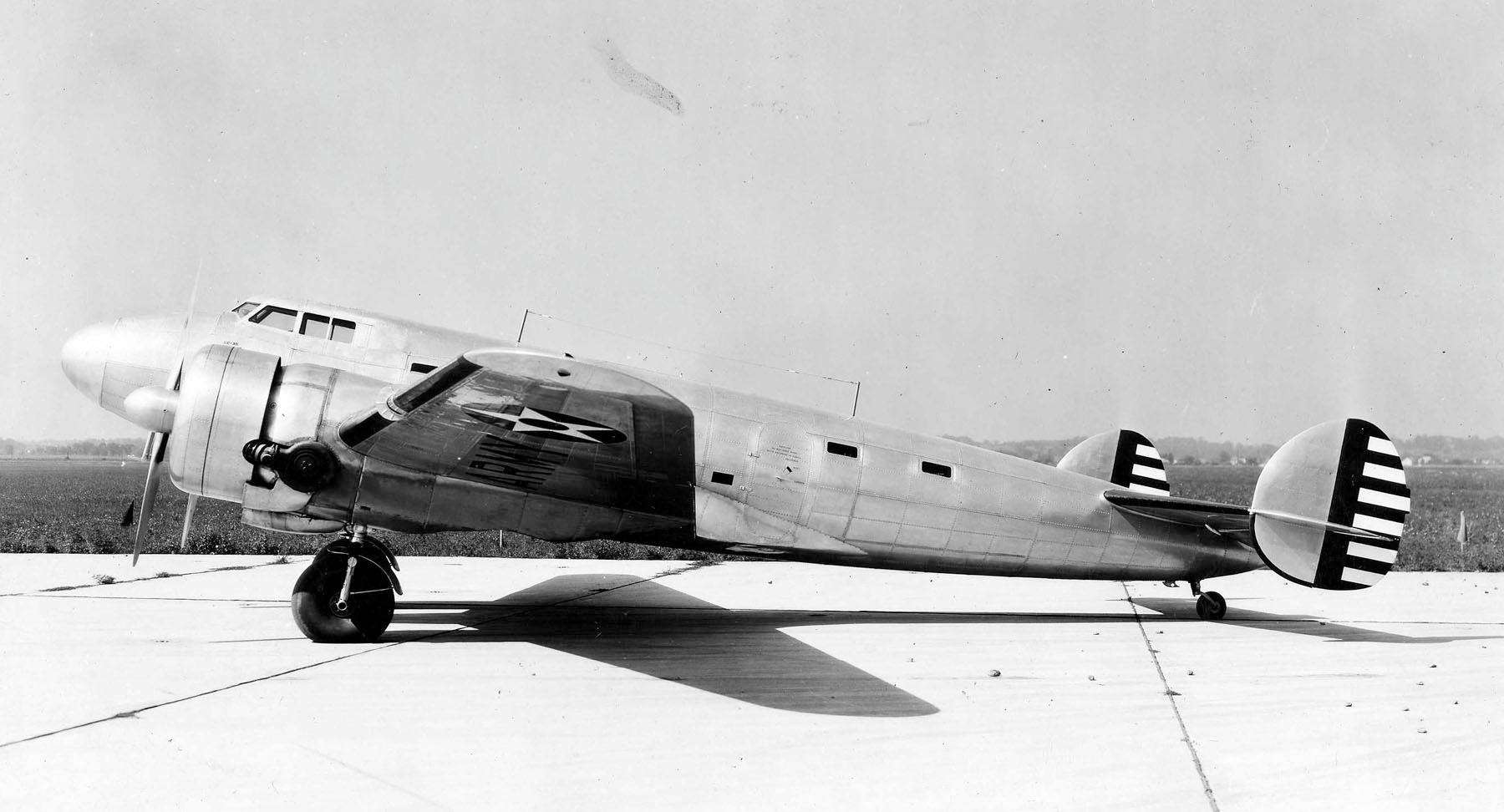Forums
- Forums
- Duggy's Reference Hangar
- USAAF / USN Library
- Lockheed XC-35
Lockheed XC-35
Post a reply
- Go to Previous topic
- Go to Next topic
- Go to Welcome
- Go to Introduce Yourself
- Go to General Discussion
- Go to Screenshots, Images and Videos
- Go to Off topic
- Go to Works in Progress
- Go to Skinning Tips / Tutorials
- Go to Skin Requests
- Go to IJAAF Library
- Go to Luftwaffe Library
- Go to RAF Library
- Go to USAAF / USN Library
- Go to Misc Library
- Go to The Ops Room
- Go to Made in Germany
- Go to Campaigns and Missions
- Go to Works in Progress
- Go to Juri's Air-Raid Shelter
- Go to Campaigns and Missions
- Go to Works in Progress
- Go to Skinpacks
- Go to External Projects Discussion
- Go to Books & Resources
-
7 years agoMon Oct 14 2024, 10:03amDuggy
 Main AdminThe Lockheed XC-35 is a twin-engine, experimental pressurized airplane. It was the second American aircraft to feature cabin pressurization. It was initially described as a 'supercharged cabin' by the Army.
Main AdminThe Lockheed XC-35 is a twin-engine, experimental pressurized airplane. It was the second American aircraft to feature cabin pressurization. It was initially described as a 'supercharged cabin' by the Army.
Design and development
The United States Air Corps wanted the aircraft to perform high altitude research and to test the feasibility of a pressurized cabin. The Corps contracted with Lockheed Aircraft Corporation to produce the aircraft at a total cost of $112,197. The requirements called for an aircraft capable of flying at no less than 25,000 ft (7,620 m) and having an endurance of ten hours with at least two hours above 25,000 ft (7,620 m). Major Carl Greene and John Younger, both structures experts who worked for the Air Corps Engineering Division at Wright Field in Ohio were responsible for the design of the pressurized cabin structure. Greene and Younger worked with Lockheed to modify a Model 10 Electra with a new fuselage consisting of a circular cross-section that was able to withstand up to a 10 psi differential. New, smaller windows were used to prevent a possible blowout while operating at high pressure differentials. The cabin pressurization was provided by bleeding air from the engines' turbo supercharger, the compressor outlet fed into the cabin and was controlled by the flight engineer. This system was able to maintain a cabin altitude of 12,000 ft (3,658 m) while flying at 30,000 ft (9,144 m). The fuselage was divided into two compartments, a forward pressurized compartment, and an aft unpressurized compartment. The forward compartment housed two pilots, a flight engineer, and up to two passengers. The aft compartment provided accommodation for one passenger and could be used only at low altitudes since it lacked pressurization.







Operational history
The XC-35 was delivered to Wright Field, Ohio in May 1937, made its first performance flight on August 5, and was involved in an extensive flight testing program for which the Army Air Corp was awarded the Collier Trophy. The lessons learned from the XC-35 played a key role in the development of the Boeing 307 Stratoliner and the B-29 Superfortress which was to be the first mass-produced pressurized aircraft.
The Air Corps brass were so confident in the new technology that they allowed the XC-35 to be used as an executive transport for Louis Johnson, the Assistant Secretary of War and future Secretary of Defense.
In 1943, NACA pilot Herbert H. Hoover flew the XC-35 into thunderstorms to gather data on the effects of severe weather on aircraft in flight.
The XC-35 was donated to the Smithsonian Institution's National Air and Space Museum in 1948 and remains there in long term storage.









The XC-35 was fitted with two Pratt & Whitney XR-1340-43 engines of 550 hp (410 kW) each compared to the two Pratt & Whitney R-985-13 of 450 hp (336 kW) fitted to the base Model 10 Electra. The engines featured a turbo supercharger to permit the engines to operate in thin air at high altitudes.
General characteristics
Crew: three
Capacity: six
Length: 38 ft 7 in (11.8 m)
Wingspan: 55 ft 0 in (16.8 m)
Height: 10 ft 1 in (3.1 m)
Wing area: 458 ft (42.6 m)
Loaded weight: 10,500 lb (4,760 kg)
Max. takeoff weight: lb (kg)
Powerplant: 2 ? Pratt & Whitney R-1340-43, 550 hp (410 kW) each
Performance
Maximum speed: 236 mph (380 km/h)
Range: 800 mi (1,285 km)
Service ceiling: 31,500 ft (9600 m)
Wing loading: 22.9 lb/ft? (111.7 kg/m?)
Post a reply
- Go to Previous topic
- Go to Next topic
- Go to Welcome
- Go to Introduce Yourself
- Go to General Discussion
- Go to Screenshots, Images and Videos
- Go to Off topic
- Go to Works in Progress
- Go to Skinning Tips / Tutorials
- Go to Skin Requests
- Go to IJAAF Library
- Go to Luftwaffe Library
- Go to RAF Library
- Go to USAAF / USN Library
- Go to Misc Library
- Go to The Ops Room
- Go to Made in Germany
- Go to Campaigns and Missions
- Go to Works in Progress
- Go to Juri's Air-Raid Shelter
- Go to Campaigns and Missions
- Go to Works in Progress
- Go to Skinpacks
- Go to External Projects Discussion
- Go to Books & Resources
